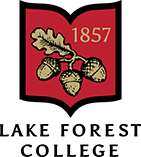Geometric morphometrics: an overview using the African bat Scotophilus
In biology, shape can be important to a variety of processes. Differences of shape can occur for many reasons, such as mutation, adaptation, or evolutionary diversification (Zelditch, Swiderski, & Sheets, 2012). Geometric morphometrics uses shape analysis as “an approach to understanding those diverse causes of morphological variation and transformation” (Zelditch et al., 2012). It is a collection of software that uses algorithms and matrices to statistically analyze shape data. Geometric morphometrics can also be useful in identifying species limits and morphological overlap between individuals. Since a lot of ecologists are using geometric morphometrics for biological studies, it can be useful to have a basic understanding of the software.
In Kenya, there are over 110 species of bats, 40 of which are vesper bats (Vespertillionidae). These bats, specifically Scotophilus, are weakly distinguished and the scientific name cannot be applied with accuracy in the field, preventing a clear understanding of their ecology, evolution, and agricultural and public health impact (Schweiger, Webala, Westley, & Patterson, 2016). Geometric morphometric analyses can be useful in identifying diagnostic characters and range boundaries that will help in clarifying the existing names of Kenyan bats.
The first step in shape analysis is digitizing the specimens. For Scotophilus, this means photographing the crania and mandibles in multiple views and uploading them to the TPS software series F. J. Rohlf developed. Once the images have been digitized, landmarks are chosen based on their representation of the sample’s variability. MorphoJ (C. P. Klingenberg) is one geometric morphometric software that can statistically analyze the data generated by TPS to determine shape differences. MorphoJ uses a full Procrustes fit, or distribution of a shape set, to transform the landmark data onto a coordinate plane. A covariance matrix is then generated as the basis of the principal component analysis, which examines the variation of Scotophilus species and the level of shape differences between recognized Scotophilus species. A discriminant function analysis can be useful in classifying unknown specimens to a species level.
Once a geometric morphometric analysis has been conducted, the results can be analyzed to provide insight to species limits and morphological overlap. In a recent study, for example, the geometric morphometric analysis of Scotophilus specimens generally reflected the morphological differences of previous studies (Schweiger et al., 2016). Two species of Scotophilus, S. d. dinganii and S. d. colias, have been contested as to whether or not they are distinct species. The geometric morphometric analysis highlighted cranial differences among the two, such as S. d. dinganii having a wider braincase and overall longer crania than S. d. colias.
While a geometric morphometric analysis is just one step in identifying species limits, it is a very useful tool that has many applications in biological studies. The Scotophilus study of morphological variation between two species with a complicated taxonomic history is just one example of the practical application of geometric morphometric software.
Note: Eukaryon is published by students at Lake Forest College, who are solely responsible for its content. The views expressed in Eukaryon do not necessarily reflect those of the College.
References
Klingenberg, C. P. 2011. MorphoJ: an integrated software package for geometric morphometrics. Molecular Ecology Resources 11: 353-357.
Schweiger, B. R., Webala, P. W., Westley, L. C., & Patterson, B. D. (2016). Cranial and mandibular morphological variation in African Scotophilus: examining species limits using a morphometric approach. Unpublished manuscript.
Zelditch, M. L., Swiderski, D. L., & Sheets, D. H. (2012). Geometric morphometrics for biologists. (2nd ed.). Oxford, UK: Elsevier
Disclaimer
Eukaryon is published by students at Lake Forest College, who are solely responsible for its content. The views expressed in Eukaryon do not necessarily reflect those of the College.
Articles published within Eukaryon should not be cited in bibliographies. Material contained herein should be treated as personal communication and should be cited as such only with the consent of the author.

